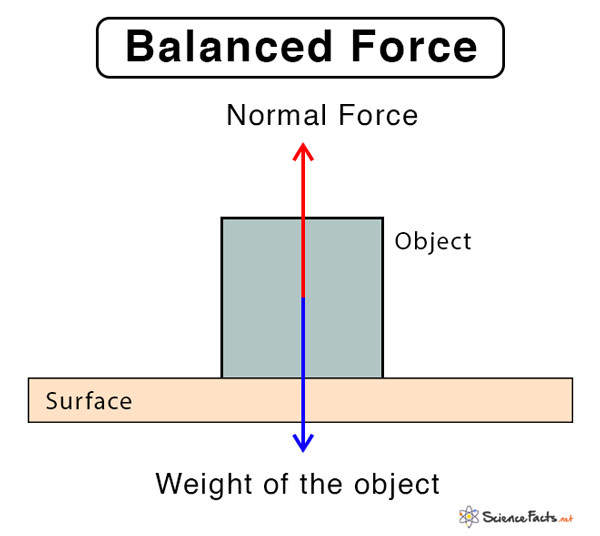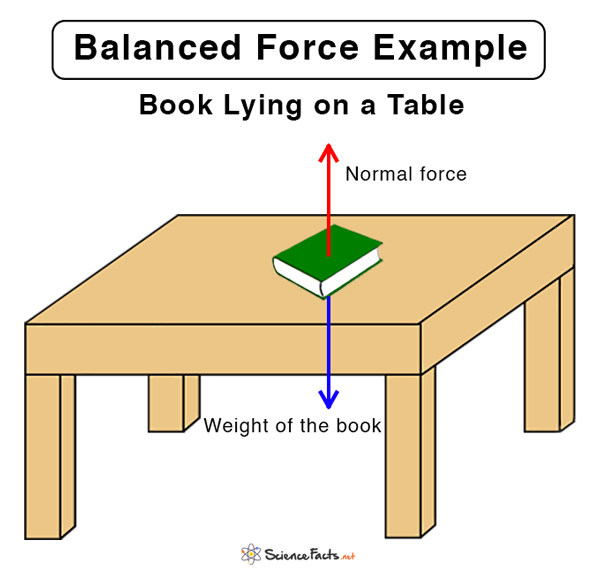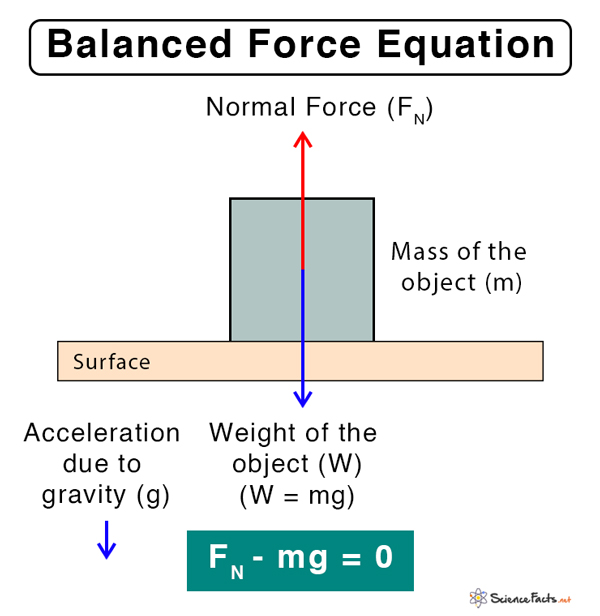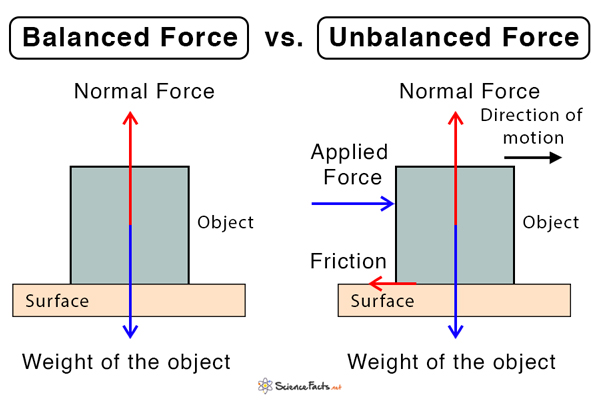What is Balanced Force
Examples of Balanced Force
Balanced Force Equation
Balanced vs. Unbalanced Forces
What happens when forces are balanced? Below are some facts about the balanced force. The effect that balanced forces have on an object are as follows:
Does not cause a change in the motion of an object, which means a stationary object remains motionless, and a moving object continues to move in the same direction at a constant velocityThe sum of all forces acting on the object along a line is always equal to zero
Balanced Force Formula: F1 – F2 = 0 For example, a book of mass m is lying on a table with its weight mg, where g is the acceleration due to gravity. According to Newton’s law, the table will exert an equal and opposite force, known as the normal force FN. The two forces will cancel each other. The object will remain stationary along the line of action of the two forces. Balanced Force Equation: FN – mg = 0 Unlike the balanced force, which does not change the motion of an object, unbalanced forces refer to a set of forces that do not nullify each other and result in a net (resultant) force. The effect of unbalanced forces is to displace a stationary object or change the direction of a moving object. In both cases, the object moves with an acceleration in the resultant force’s direction. It continues to move as long as this force exists. Similarities Like unbalanced forces move objects, an object can move even if balanced forces exist. For example, a force is applied to an object such that it moves against friction with a constant velocity. Therefore, it does not have acceleration, and the net force is zero.



